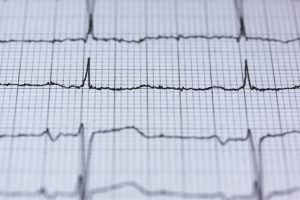
Osita Okafor (Aston University, Birmingham, UK) presented an oral abstract this week at the Heart Rhythm Congress (HRC 2019; 6–9 October, Birmingham, UK) that demonstrated that post-implantation changes in QRS area, derived from vectorcardiography (VCG), are superior to QRS duration and left bundle branch block (LBBB) in predicting cardiac mortality after cardiac resynchronisation therapy (CRT).
Some studies have shown that pre-implantation QRS area (QRSarea) predicts clinical outcomes after CRT. Okafor explained: “CRT is an important therapeutic strategy for heart failure patients. One of the stubborn findings over the past 20 years has been the concept of a high non-responder rate to CRT in up to 30%, particularly when we use QRS duration as the main selection criteria. In recent times, there has been renewed interest in the use of vectorcardiography. In comparison to 12-lead electrocardiography (ECG), vectorcardiography provides a more precise assessment of 3D activation patterns. Importantly, the area of the QRS complex on a 3D vectorcardiogram can now be easily derived from 12-lead ECG. Several retrospective observational studies have shown that pre-implant QRS area appears to be a better marker of CRT response then either QRS duration or QRS morphology.” Recently, post-implant QRS area reduction has also been employed as a surrogate marker of LV resynchronisation. However, “changes in QRS area during biventricular pacing has only previously been studied in relation to the acute haemodynamic response to CRT”, said Okafor.
He added: “At present, what is not known is whether post-implantation changes in QRS area can predict outcome. The aim of the current study was to look at the QRS area reduction following CRT and how this correlates to hard clinical endpoints.”
The retrospective single-centre study at Queen Elizabeth Hospital (Birmingham UK)—“which is a high volume, CRT implant centre”—assessed QRSarea, derived from pre- and post-implantation VCG, in relation to the primary endpoint of cardiac mortality after CRT. Other endpoints in the study were total mortality, total mortality or heart failure hospitalisation, and total mortality or major adverse cardiac events (MACE).
In 380 patients (age 72±12.4 years, 68.7% male) undergoing CRT over 7.7 years (median follow-up 3.8 years, interquartile range [IQR] 2.3–5.3), pre-implantation QRSarea ≥102µVs predicted cardiac mortality (hazard ratio [HR] 0.36, p<0.001) as well as total mortality (HR 0.58, p=0.001), total mortality or heart failure hospitalisation (HR 0.53) and total mortality or MACE (HR 0.52) (both p<0.001). The association of QRSarea with cardiac mortality was independent of known confounders, including QRS duration (QRSd) and morphology (p<0.001). After CRT, a reduction in QRSarea ≥ 45µVs or any reduction in QRSd predicted cardiac mortality (area under curve 0.74 and 0.72, respectively, p=0.425 for comparison). Concomitant reductions in QRSarea and QRSd were the best predictor of cardiac mortality (HR 0.12, p<0.001 for interaction).
“Generally speaking, we found that post-implant changes in QRS duration and QRS area were better predictors of clinical outcomes than pre-implant QRS duration and QRS area. This is an important finding, as it indicates that not only is the baseline electrical substrate important, but also its subsequent modification by CRT.”
Interestingly, the combination of post-implant reductions in both QRS area and QRS duration provided the best predictive power. Okafor clarified: “With respect to the primary endpoint of cardiac mortality, the evidence from this study suggests that you do a lot better if you have post-implant reductions in both QRS area and QRS duration, than in those who have a reduction in only one parameter or neither parameter”.
Similarly, for the arrhythmic endpoints of sudden cardiac death, ventricular tachycardia or ventricular fibrillation, or shock from the device, a reduction of both QRS area and duration predicted better outcomes. Dr Okafor emphasised: “In relation to the arrhythmic endpoints, one needed to observe a reduction in both QRS area and QRS duration in order to predict better long-term event free survival.” At present, the explanations for these findings are unclear.
Concluding, he said: “We are the first study to show that post-implant changes in QRS area can predict better long-term clinical outcomes following CRT. What is particularly exciting is that three-dimensional vectorcardiogram can be easily obtained from routine 12-lead ECG data. In fact, the vector signal is already contained within modern ECG machines and only a simple algorithm is required to extract QRS area. Rather than replace QRS duration, we have shown that QRS area can be used in combination with QRS duration to improve the prediction of clinical outcomes following CRT.”










